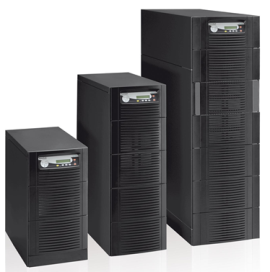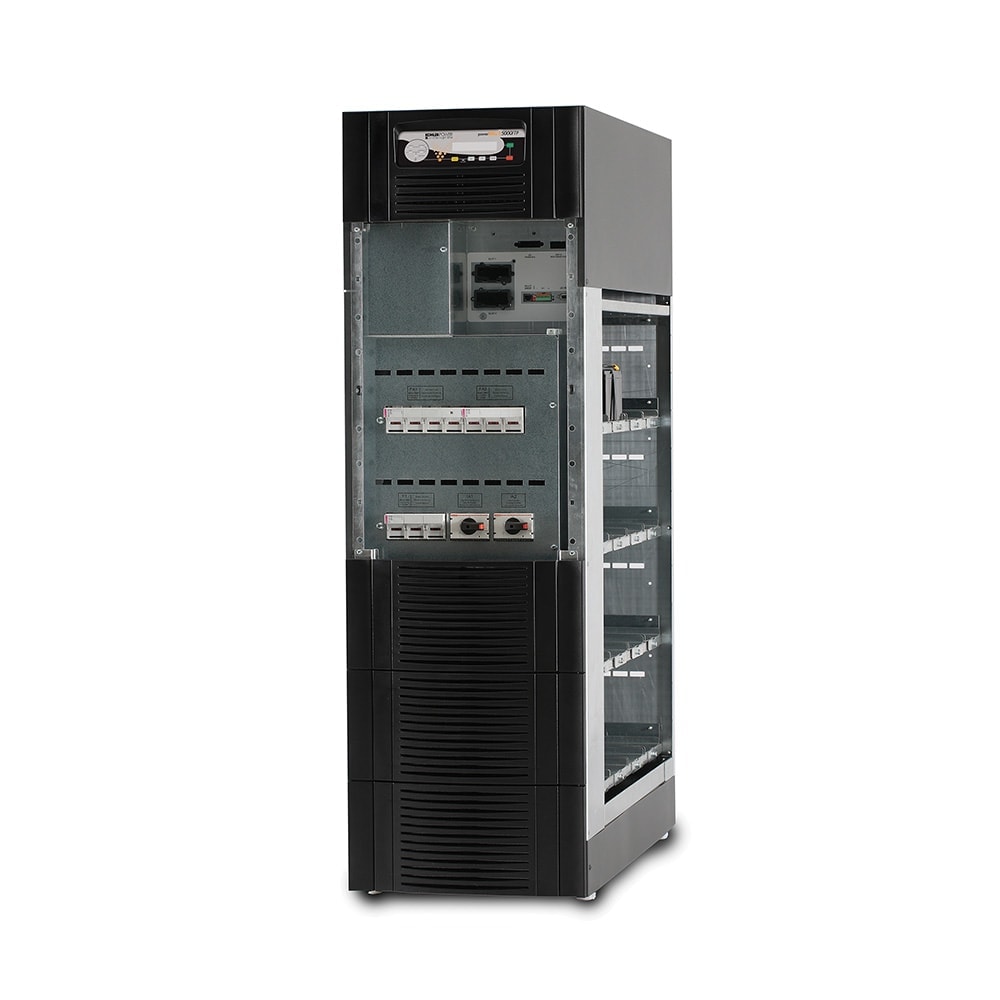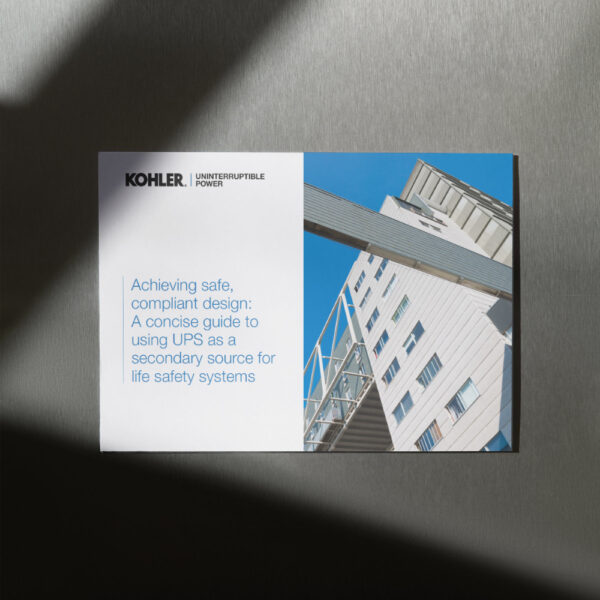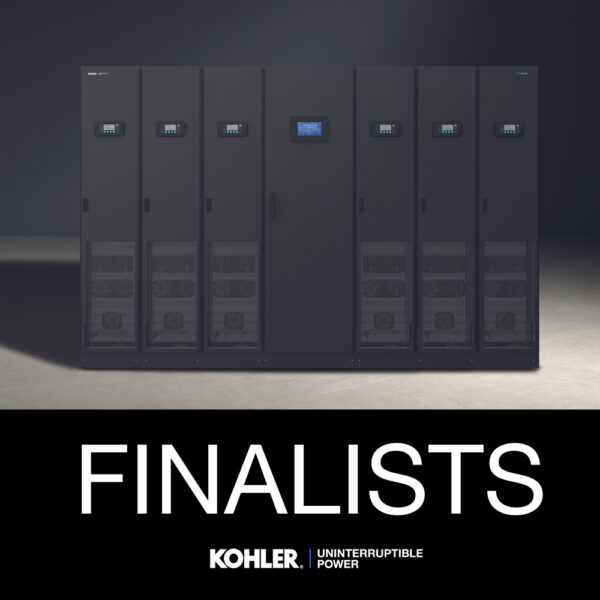While data centres and other large-scale applications unequivocally require UPS power protection, the same is also true for smaller applications such as mid-sized server rooms, communications centres or industrial control rooms. The scale of their ICT activities may be reduced, but the consequences of a disruption could be just as severe for the users involved.
In this article, Alan Luscombe, director at KOHLER Uninterruptible Power Ltd., a KOHLER company, discusses how to bring data centre-type UPS protection to server rooms and other smaller ICT installations.
As most modern data centres contribute critically to their owners’ business continuity, it’s unsurprising that they rely on UPSs to assure clean, uninterrupted power at all times. Given the possible consequences of a power problem, these systems are usually implemented with the best available technology; typically including redundant units to maximise availability, together with online double-conversion topology to fully protect the load from any power problems. In today’s drive for greener environments and cost savings, high efficiency is also essential.
Additionally, these UPSs will have been sourced from suppliers proven to be effective maintenance and support partners, as uptime depends on these factors as much as on the equipment installed.
But what about smaller ICT users like server rooms or communications centres? With business activity and installation size less than a data centre’s, their budget, manpower and space resources are correspondingly reduced. However, their need for protected power remains just as critical. Fewer people may be affected if a server room rather than a large data centre is compromised by power problems, but for those that are, the consequences may be just as severe.
Fortunately, though, answers are available. It is possible to purchase UPS solutions, in terms of both hardware and support, that are scaled to midsized server room requirements while offering the same protection levels as available to their larger data centre counterparts. To understand how such marriages can be made, we can start by looking at the UPS requirements and constraints that characterise server rooms; some are the same as for data centres, but others differ. With this profile in mind, we can then review one solution that is currently available.
Scaling for server rooms
An essential and primary consideration should be the UPS’s topology. Server rooms, as data centres, should use dual-conversion, online solutions, as these alone secure full protection against all possible mains-borne disturbances as well as complete power blackouts. Dual-conversion UPSs are so-called because of their two conversion stages; a rectifier for AC/DC, and an inverter for DC/AC. In online configurations, incoming utility power, when present, always passes through these two stages before reaching the load, which is connected to the inverter output. The UPS components continuously shield the load from mains-borne noise and transient voltage excursions, as well as providing a constantly well-regulated supply.
If the mains does fail, the inverter continues to support the load without interruption, by drawing power from the UPS battery. Flexibility in battery configuration is therefore desirable, to set up a battery autonomy to support a load of known size for a given time, or to provide a grace period either for a generator to start up, or for the load to be shut down safely.
Offline systems, by contrast, connect the raw mains directly to the load during normal operation, exposing it to damage from any incoming voltage aberrations, as well as subjecting it to a short-duration but finite supply break during any transfer to the inverter output.
As the UPS fulfils its role in providing protected power, its own availability is essential in server rooms, just as in larger data centre applications. Redundancy should be designed in wherever possible, as this significantly elevates availability. If single points of failure are eliminated, the UPS system can become resilient to component or even unit failures, providing uninterrupted and continued support for the load with its remaining capacity.
Data centre UPS systems often have a modular design, where one or more modules – each a complete, self-contained UPS unit – are assembled into a 19” racking frame. Because each module adds incrementally to the overall capacity, N+1 redundancy can be achieved easily and cost-effectively. This modular approach yields two further benefits; scaling to meet changing demand becomes easy, and maintenance can be performed without interrupting power to the load, simply by swapping a module.
These redundancy, scalability and maintainability benefits are just as desirable for server rooms, but such premises’ more limited size may preclude the space overhead of racking system cabinets. If so, a better alternative is to use free-standing units, provided they have a compact footprint and can be paralleled together.
A practical server room UPS solution
At this point, a profile of a UPS system with data centre-type capabilities, but scaled to server room constraints, begins to emerge. KUP Ltd.’s KOHLER PW 5000/TP, as shown in Fig.1, gives a practical example of this profile. Physically, it is a low-weight three-phase tower system, offering capacities from 10kVA to 50kVA. It achieves a power density of up to 100 kW/m2 from a footprint of just 0.4 m2 at 50kVA; ratings that suit it well to a space-limited server room environment.
Fig.1: KUP.’s KOHLER PW 5000/TP, designed for mid-size server rooms, networks, telecommunication systems and industrial processes
The UPS provides full load protection through its dual conversion online topology, and high availability through using redundant critical circuits which duplicate all its internal critical components and circuitry, and eliminate single points of failure.
Up to 20 units can be paralleled, to increase unit-level redundancy and allow easy scaling. Redundant units can also be maintained without interrupting power to the system. Each KOHLER PW 5000/TP UPS offers a choice of cabinet dimensions, allowing users to accommodate their ideal battery size. Autonomy can be further extended with additional battery cabinets, which match the UPSs in appearance. Maintenance-free VRLA or NiCad batteries can be used.
Energy use and running costs are minimised as the transformerless UPS achieves an efficiency of up to 95.5% over a wide load range. Further savings arise through ripple-free and optional temperature-controlled battery charging, which protects batteries and extends their life-time performance.
The UPS also has electrical characteristics that enhance its desirability in server room environments. An input power factor of near unity reduces input cable and fuse sizes, while an outstandingly low THDi of <3% saves unnecessary over-sizing of gen-sets, cabling and circuit breakers. Input component lifetimes are extended, while interference with nearby equipment is eliminated.
Users can ensure the KOHLER PW 5000/TP sustains its availability and performance levels through setting up an appropriate maintenance contract with the supplier. This can include both regular visits and an emergency callout plan with a guaranteed response timeframe. Special arrangements can be made with KUP. for battery maintenance, and a remote monitoring service can also be included. Each contract can be tuned to a particular installation’s requirements, but, overall, cover to 24 hours a day, 365 days a year can be arranged.
Conclusion
Server rooms, and similarly-sized applications such as communications centres and industrial control rooms, are smaller-scale than data centres, yet they require the same level of power protection and security. Power quality and continuity, availability, efficiency, maintainability and scalability all remain as essential attributes of the UPSs they use. In this article, we have seen how a modern UPS system can meet all these requirements while being scaled to a server room type environment.






